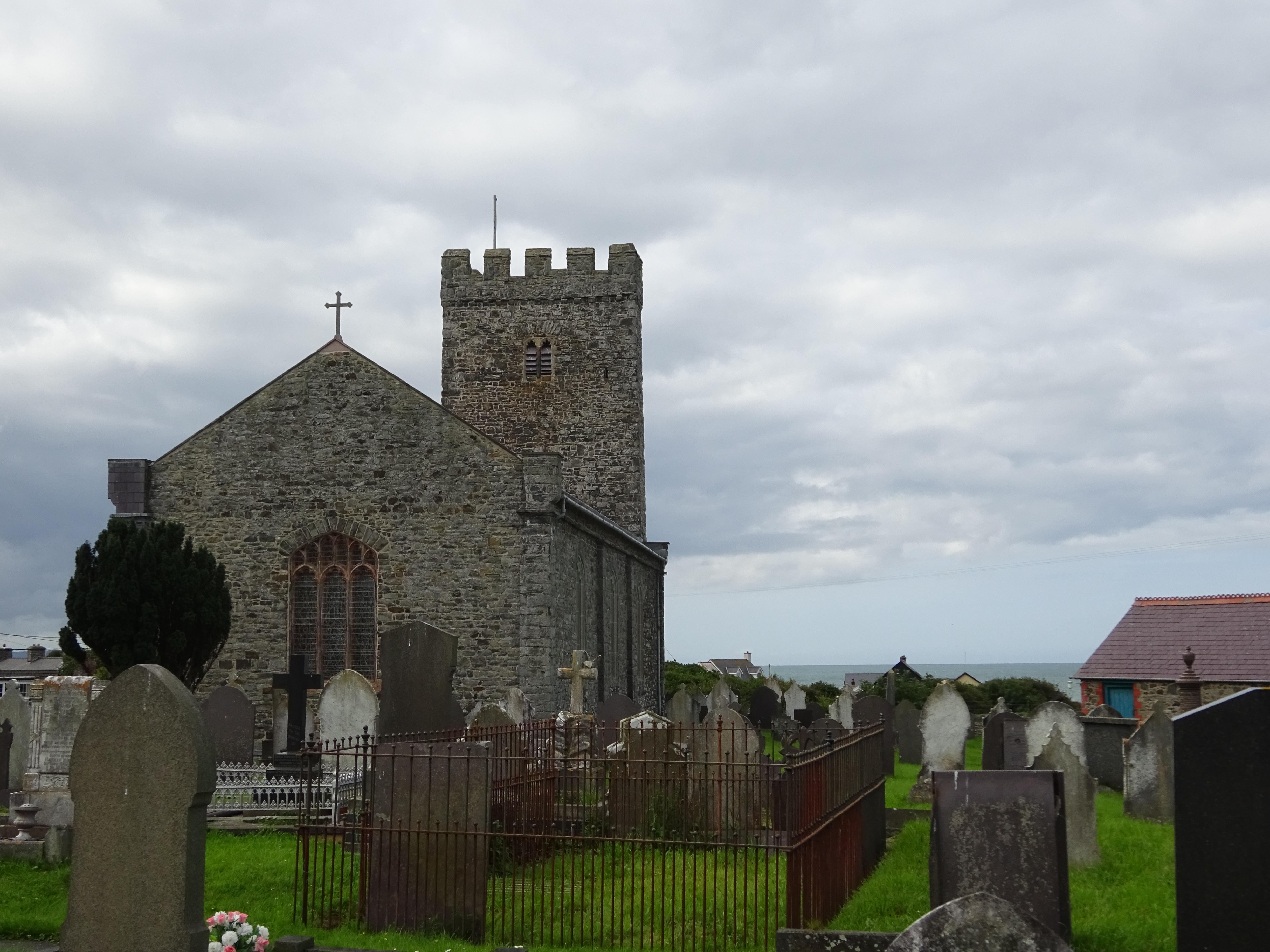St Michael
Aberystwyth, Ceredigion
Built 1886-90 by Nicholson of Hereford on land given by WE Powell of Nanteos, it replaced a church of 1833 by Edward Haycock of Shrewsbury.

A Victorian coastal church and the birthplace of St Non, mother of St David, St Ffraid’s church has fascinating connections both ancient and modern.
Llansantffraed, Ceredigion
We know a church has been on this site since the 12th century, as Roger de Clare granted the church to the Knights Hospitaller of Slebech in 1158, and this granting was confirmed by Rhys ap Gruffydd later in the 12th century. The only survival from this time in the church is the square limestone font with its band of rosette mouldings which dates from the 12th or 13th century. The tall square tower dates from the 16th century and retains its original windows and rare surviving medieval bell frame inside; while the rest of the building was rebuilt in the 19th century.
Can you spot the delicately detailed beam in the porch roof which was reused from the medieval rood screen that would have separated the nave from the sacred chancel? In 1839 David Francis of Llanon rebuilt the church in the fashionable chapel like ‘preaching box’ style, where the congregation focused on the pulpit, and the word of the preacher, rather than the sacred altar in the chancel.
Set just 41 feet above sea level, St Ffraid’s church lies exposed to coastal erosion and strong south westerly coastal gales and its walls, like the surrounding houses, are protected with a characteristic layer of hanging slate. No surprise given its location then that this is one of many churches in Wales dedicated to St Ffraed (Bridget in English), an Irish missionary saint born around 450AD who travelled from her country of birth throughout Wales and is famed for her mercy and kindness to the poor and her affinity with cows and dairy work. Inside the church she is depicted in a stained glass window holding a bowl of milk.
Unusually in the same window another female saint is depicted, St Non with her young son Dewi Sant (St David). Believed to have been born in Llanon (Llan means the sacred place /of Non) and to have walked 6 miles daily from here to school at Henfynyw, the names of the places here tell an ancient story. ‘Mynyw’ or ‘Menevia’ is the original name for St David’s and Henfynyw, Old Menevia, may indicate a first foundation by St David here, where the church remains dedicated to him. The birthplace of St Non at Llanon is said to have been marked by a chapel, now ruined with an uncertain location. But notice the mounted stoop stone in the porch, this was brought here, from the site of Non’s chapel 40 years ago.
Llanon was a ship building village and generations of men became mariners here, some trading as far as South America; between 1786 and 1864 some 55 vessels were constructed in the parish. Notice the grave of Henry Harris. the parish’s last and most successful shipbuilder and on the north side of the church door, the clear outlines of ships built in this place. But it’s not all mariners, just south of the church door you can see the marble grave of David Morgan (1814-1882) and his family of Alltlwyd, a committed churchwarden and the last operator of the local Craiglas Lime Kilns which can he found along the coast towards Llanrhystud. Morgan was also the last and perhaps the only brewer in the village.
On the coastal plain between the church and the sea are the ‘Morfa Escob’, the Bishops Meadows. Bounded to the north and south by the Peris and Cledan streams, a rare survival of an ancient field system of strips known as ‘slangs’, by legend believed to be a gift from St David in 1231.
Aberystwyth, Ceredigion
Built 1886-90 by Nicholson of Hereford on land given by WE Powell of Nanteos, it replaced a church of 1833 by Edward Haycock of Shrewsbury.
Aberystwyth, Ceredigion
Seion Chapel was opened in 1878, the designer was Richard Owen of Wall, Liverpool and is fairly typical of nonconformist chapels of that period.
Llanbadarn Fawr, Ceredigion
A medieval church which was a great centre of learning.